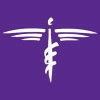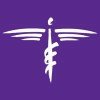
Triathlon prep – bike, run, swim faster with careful preparation, training
As many prepare to run, swim and ride in Des Moines’ Hy-Vee Triathlon (annual summer event), there are a few things to keep in mind while getting in shape.
“Like anything with physical activity, preparing for a triathlon is a process. You must have a base level of fitness before starting a vigorous endurance program and should consult your physician prior to beginning any training program,” said , manager of the Des Moines University Physical Therapy Clinic. “Most athletes will then begin a specific training program for approximately 16 weeks to prepare for an Olympic distance triathlon like the Des Moines event.”
Smith offers the following triathlon training tips:
- Train with a heart rate monitor to stay in the target zone.
- Practice your glycogen and fluid-replacement strategies in training so you can safely rely on them in important events or race situations.
- Practice transitions and plan out the process of moving from one event to the next to shave off seconds or even minutes of time.
It is also important for athletes to maintain proper nutrition and hydration while training for such a big event, according to Shane McClinton, M.S.P.T., CSCS, from the Des Moines University Running and Cycling Clinic. He said regular stretching routines and constant sleeping patterns will gear the body up for optimum performance. In addition to physical preparation, joining a club or working with a coach may help with mental readiness. For assistance in training, consider joining a club (running, cycling or triathlon) or using a coach.
Biking-specific training tips
Before you hop on your bike for a training ride – or 40K ride – evaluate your riding fit and form. This is important for minimizing discomfort, preventing injuries and improving performance.
“Since individuals come in all shapes and sizes, a perfect fit to a standardized bicycle can be difficult,” explained McClinton. “That’s why bicycles come in varying sizes with multiple interchangeable and adjustable parts. A good fit should allow a bicycle to suit the individual’s unique characteristics, goals and concerns; not the other way around.”
The most common injuries from biking are attributed to improper bike fit or form and include muscle or tendon strain, nerve compression and joint maladies. Often these aches and pains are in the knees, back, neck, wrists and hands. Various bicycle frame sizes and shapes make finding the right sized bike difficult, especially because bike manufacturers vary in how they measure a frame.
“Most bicycle shops and some manufacturers provide sizing charts based on height, weight or inseam length,” McClinton said. “An important factor to consider is not just the seat tube (bar determining seat height) length, but also the top tube (bar running between seat tube and handlebars). Generally, the most rear part of your body should be just inside of the rear hub (middle of the wheel) and your wrists should be just inside of the front hub.”
Proper posture is also important. The general rule of thumb for a road bike position is a 25-30° angle at the knee, a 30-40° slope to the back and a 90-100° angle at the shoulder, between the body and upper arm.
As with most modes of exercise, appropriate warm-up and cool-down is critical to maximize performance and prevent injury. Warm-up should include starting out the ride at an easy, comfortable pace for five to 10 minutes before working up to a workout pace. Following the ride, your muscles and tendons are most compliant and responsive to stretching. The muscles used most during cycling, therefore the most important to stretch, include the quadriceps (front of thigh), hamstrings (back of thigh), glutei (buttock) and calf muscles.
Running-specific training tips
In addition to proper training up to the event, it is important to consider tapering right before the event. McClinton said some rest from running is recommended for one to two days prior to a big event, more so for novice runners. For those with more experience, a light run of one to two miles for one or two days before the event is advisable.
McClinton also warned, “Don’t forget to warm up! Appropriate warm up is very important. This can include light jogging or track field drills (i.e. high knees, leg kick backs, carioca and striding exercises). Mainly, concentrate on performing slow and controlled movements throughout and slightly in excess of the movement that will take place during the event. This will prepare your body for the event at your normal pace.”
Swimming-specific training tips
Just as you adjust the gears on your bike and warm up your muscles before a run, swimming also requires plenty of preparation. Smith said most common swimming injuries are due to compression of the tendons between the bones within the shoulder joint and tendonitis.
“Methods to prevent those injuries in swimmers include modifying technique, training and improving flexibility and strength,” Smith added. “Exercises should include those that help the rotator cuff and scapular stabilizers along with back and abdominal muscles or core body strengthening.”
For more information about the upcoming triathlon, visit Hy-VeeTriathlon.com.

